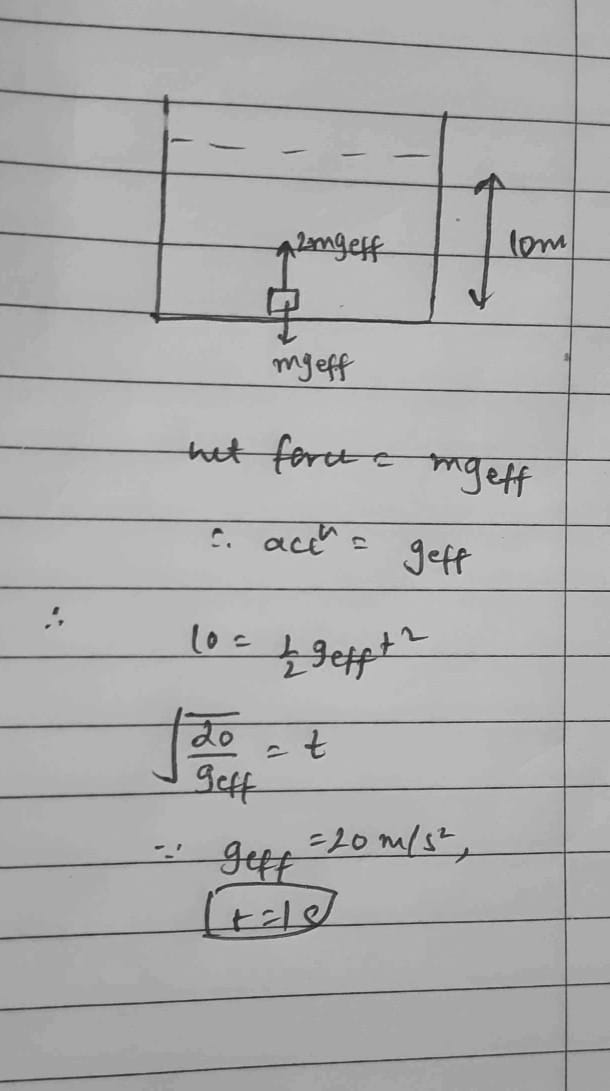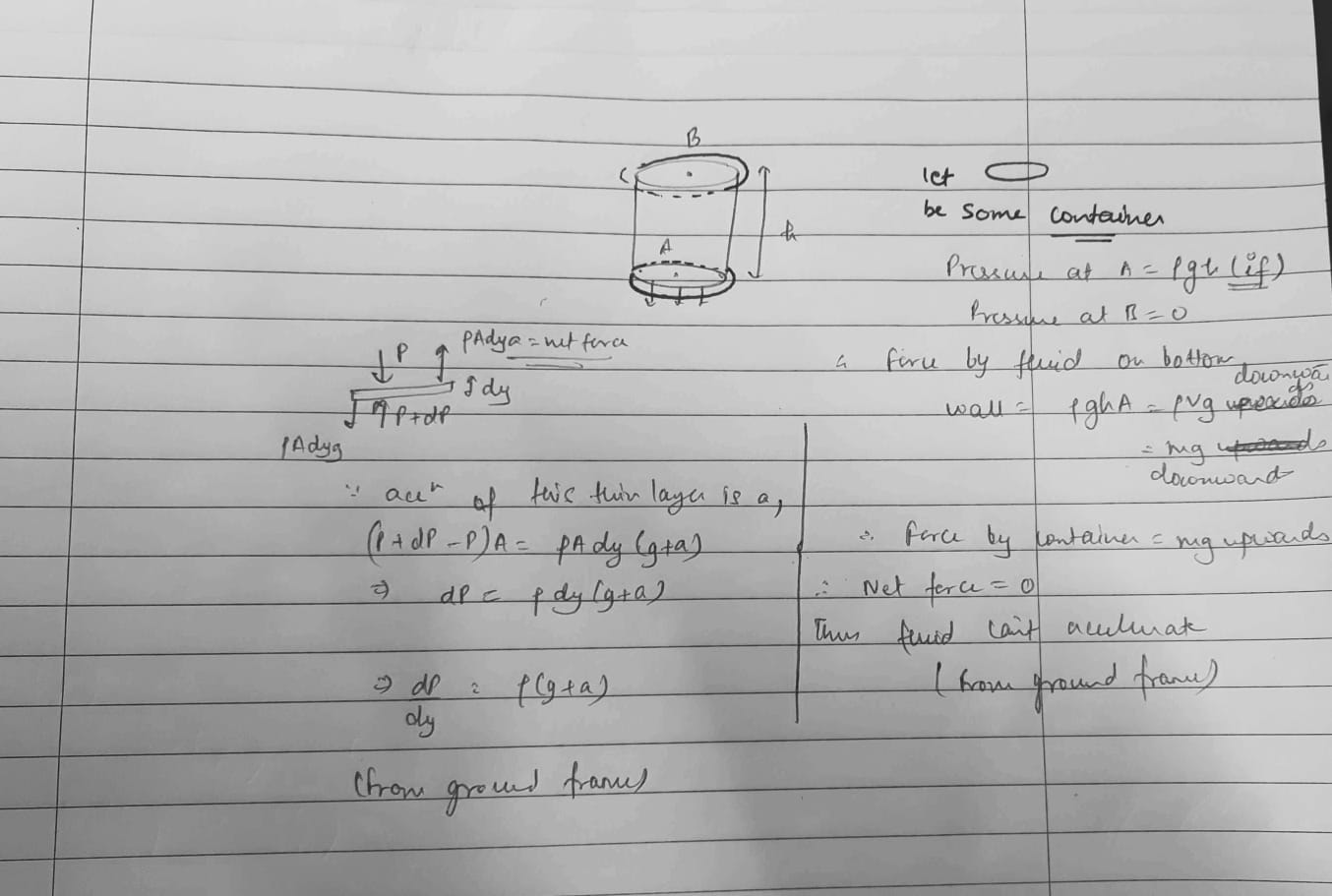Fluids + NLM
wont net force on this be 0? psudeo force + mg = Boyouncy Force
so shouldnt ans be D? since it will inf time
so shouldnt ans be D? since it will inf time

+solved @user1 @user2...

